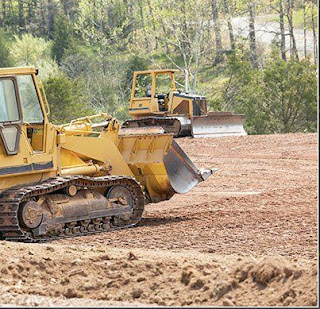Tree Trimming 101
A tree is a thing of beauty. Not only does it provide you with shade on a hot day, but a tree also helps keep the ground from eroding beneath your feet. While many people cut down stately old trees for fear that they’ll fall on their homes, for the most part, trees protect your property from the worst that Mother Nature can throw at you. At least they do if they’re properly maintained. To give you a leg up on the basics of tree maintenance, I thought I’d take the time to share with you some of the things I’ve learned over the years.
Why do trees need to be trimmed? – If you’ve ever had
your trees trimmed, then you know the sensation when a sturdy branch hits the
ground and you feel it as much as hear it.
Like us, trees are mostly water.
Since a gallon of water weighs eight pounds and a tall Oak tree can
stand fifty feet tall, that means a tree can weigh almost as much as a
locomotive. Provided that an oak tree is
properly maintained, all that weight will be equally distributed, making the
tree stand as solid as the Rock of Gibraltar.
However, since limb growth is predicated on maximizing the gathering of
solar radiation, any tree can favor growth in a direction that slowly but
surely shifts its center of gravity in one direction or another. That’s one reason that tall trees need to be
trimmed on a regular basis.
One of the other reasons is when limbs sicken and die. Just like the trunk, some tree limbs can weigh a ton or more. This is not something you want to come tumbling down on your home, garage, car, or on anyone who happens to be strolling through your yard when it falls. If you see a substantial limb that has shed its leaves, it’s time to call a tree trimming company. Only a professional tree trimmer has the experience and equipment needed to safely fell a big branch. Plus, an arborist, as opposed to a landscaper, has spent years amassing knowledge on trees. This is important when it comes to helping you keep your trees healthy and balanced. Below are several other things you should know about tree trimming.
1. How often should you have your trees trimmed? That depends on the types of trees you have on your property. Especially in Florida, trees grow fast since the winters are so mild and the growing season is so long. It isn’t unusual for a live oak to add two feet of growth in a single year. While different trees grow at different rates, if your yard contains a mixture of trees, my advice is to have them trimmed every year. Not only will this help your trees live longer and grow straighter, it will also allow your arborist to assess the health of your trees which will save you money in the long run.
3. The low down on roots. – For most homeowners, tree roots are out of sight and out of mind. That’s because unlike branches, tree roots grow underground. That’s a given. But what most people fail to realize is that some trees have root systems that equal or even surpass the growth of limbs above ground. Depending on where a tree is situated, that can lead to problems as roots can crack sidewalks and driveways or sometimes shift a house’s foundation. In the case of cypress trees, their exposed roots known as knees can make mowing or even walking through a yard a challenge. While many people’s solution is to cut down the offending tree, this too can be problematic, since roots help prevent erosion. If you’re experiencing problems with tree roots, your best bet is to consult an arborist. The solution could be as simple as adding soil or mulch to prevent you or your guests from tripping over roots. Even if the tree needs to be trimmed or felled, an arborist can tell you what the consequences will be in the area around it.
4. How low can you go? – Another thing that you need to know about pruning back limbs is that the ideal time to do so is during the winter months when the tree is dormant unless the limb presents a safety hazard. The best time to prune limbs is when they’re young. Unless a limb is diseased, rotting, or dead, you should avoid cutting limbs that are thicker than 2-3 inches. Even then, you don’t want to trim any branch too close to the trunk or too high off the ground. When it comes to thinning the branches or raising a crown, you need to understand the dynamics of tree growth before you inadvertently damage your trees. This is also why it’s preferable to have an experienced trimmer handle your tree maintenance needs.
5. Timber! – While it’s sometimes necessary to remove a tree, the act of felling a tree is something that no homeowner should take lightly. In the first place, any time you cut down a tall tree, there is a danger to you and your property. If a tree falls the wrong way, not only can it harm people, structures, and vehicles, it can cause irreparable damage to other plants growing nearby. Besides, unless a tree is dead, dying, or diseased, it’s often salvageable. When you realize the value a tree brings to your property in terms of curb appeal, energy savings, and privacy, you should think twice before you decide to fell a tree.





I always leave chainsaws to the professionals.
ReplyDelete